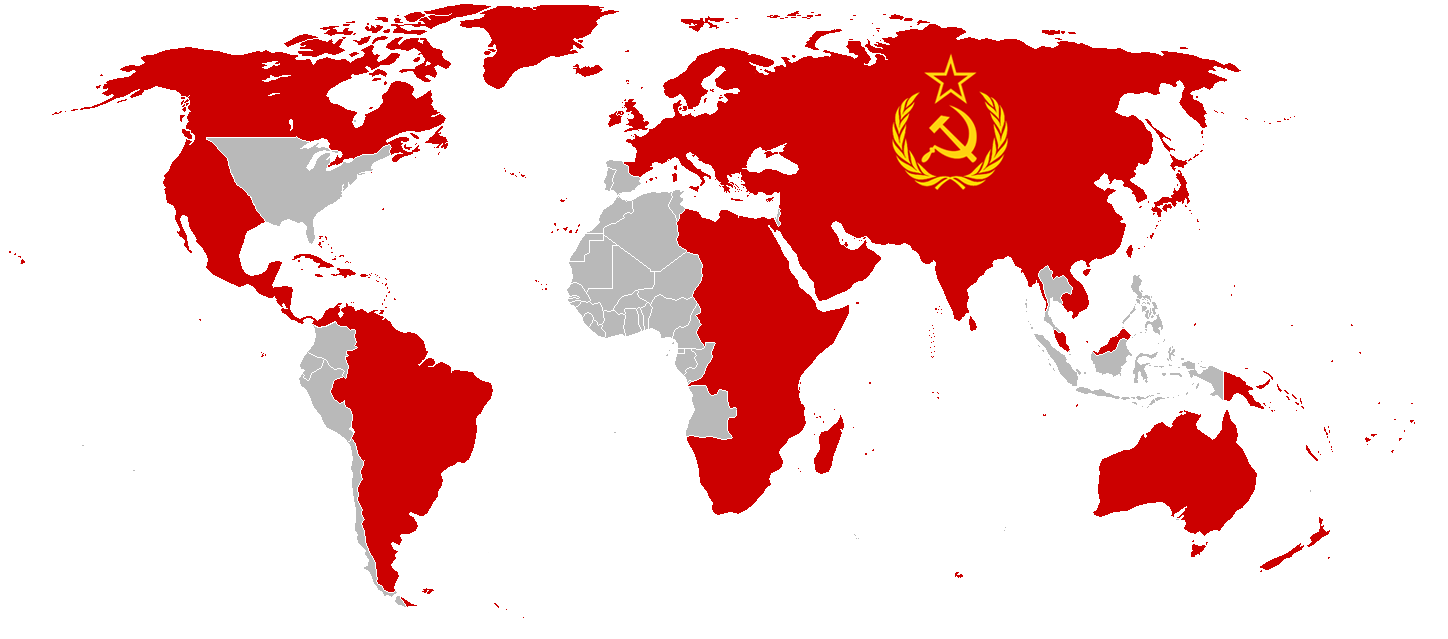For example,
60 seconds = 1 minute
60 minutes = 1 hour
24 hours = 1 day
7 day = 1 week
29-31 days = Month (approx.)
365/366 days = year
It’s like for the imperial measurement of distance, where 1 mile = 5280 feet…
Edit: just to clarify, I’m more or less keen towards any consistent, decimal-based measurement systems like base-10 or base-12.
TL;DR: mostly ancient math and moon stuff.
This article suggests 60/60 came from the Sumerians who used a base-12 counting system. This and other articles note that 60 is more flexible than 100 in many ways as it’s divisible by 2, 3, 4, 5, and 6.
The Babylonians invented the 360 degree circle, and so understood the sun to move about 1 degree per day.
The number of days in a week and weeks in a month is based on lunar phases (month=moon, and in Chinese the word for month is the same as moon, 月). This article says the approximately 28 day month is traced to ancient Mesopotamia with leap days used to stay consistent in the long run. As for days of the week that article also says they were based on the 7 non-fixed heavenly bodies visible to the naked eye.
Tl;dr: The Middle East made it.
Edit: Oops, I jumped to conclusions a bit… but I wasn’t suggesting a political agenda towards it… just to clarify…
TLDR: we want easy divisions for time, and nature isnt decimal.
The only metric unit of time is the second. all the other ones are customary units that are geared towards living on Planet Earth. There was a movement for decimal time at one point, but it never really took off. Given that the length of a day changes, I don’t see how it would remain stable either. Which is something that SI units try very hard to make sure doesn’t happen.
12 hours in half a day is fine for me. 12 can be divided into halves, thirds, quarters and sixths. That’s useful for planning out a day. Time is one of the applications where I don’t have a complaint about using base 12.
Exactly why there are 12 months and 24h a day, for easy divisions.
I think the 12 months thing is more due to the cycle of the moon being about 12 per year right?
Yeah, 12.4 moon cycles a year.
The real confusion is when you count the days in a month, or year…
those come from the conflict between the solar and lunar calendars
I’ve heard of a suggestion of using 13 months of 4 weeks each.
It adds up to 364 days.
The remainder day is a new type of annual leap day and you get the additional normal one every 4 years.
This seems more consistent…
we eat captured solar energy and rely on tides & animal behavior which is connected to lunar cycles, the sun and the moon are what our efforts to measure time are hinged on at the macro level. the biggest problem is that the sun and moon do not sync up neatly in their movements. there are solar calendars and lunar calendars and attempts to merge them are difficult mathematically.
for example:
Since each lunation is approximately 29+1⁄2 days, it is common for the months of a lunar calendar to alternate between 29 and 30 days. Since the period of 12 such lunations, a lunar year, is 354 days, 8 hours, 48 minutes, 34 seconds (354.36707 days), purely lunar calendars are 11 to 12 days shorter than the solar year. In purely lunar calendars, which do not make use of intercalation, the lunar months cycle through all the seasons of a solar year over the course of a 33–34 lunar-year cycle.
One can reach twelve joints on a 4-fingered hand with the thumb. That’s the basis of the base-12 counting system.
Well, the time for eath rotation isnt a constant, it will slowly decelerate and days will be longer.
Using multiples of 10 for time was considered, but was a shitty option compared to the current deal. Months should all be 30 days and then have a free week at the end of the year tho, egyptian style.
Parties during that week would be unreal
they were, in ancient egypt. They were supposed to be dangerous days, because religion wanted to keep control of the people on the days they werent tied to the regular schedule, by scaring them.
Americans use the imperial system, yet claim not to be imperialist. Curious 🤔
Time measurements like heat, mass, length etc are arbitrary units. It is just that they are the oldest.
The Sumerians gave us our time standards and they loved base 12. So twelve hours in the day and 60 (5x12) minutes in the hour. Also 12 months in a year and 360 degrees in a circle.
The French actually tried to implement decimal time after the revolution but reverted back after 6 years or so.
Since we are on the topic of time measurements, take Caesar and Augustus’s names off of my calendar please and thank you.
Also, if you can fill in February to be full 30 days, that’d be great as well. Take a day off from each of the emperors.Wait, where does Caesar fit into the naming of calendar months?
Edit: I see, Julius Caesar for July. Now, I see fully your point
July and August.
And beyond that September, October, November and December are just, essentially, Latin words for 7, 8, 9, 10. Which of course raises the obvious question/observation of “why the fuck are months 9-12 given names correlating to 7-10?” And the answer is… the above two months were shoved in. For reasons. Why not put them at the end? “Because fuck you, that’s why!” (There’s probably some reason and I don’t actually care. I’ve officially thought too much about Rome and Latin for the day)
https://www.almanac.com/how-did-months-get-their-names
March (Martius) was named for Mars, the god of war, because this was the month when active military campaigns resumed. May (Maius) and June (Junius) were also named for goddesses: Maia and Juno. April (Aprilis) is thought to stem from the Latin aperio, meaning “to open”—a reference to the opening buds of springtime. The rest of the months were numbered; their original names in Latin meant the fifth (Quintilis), sixth (Sextilis), seventh (September), eighth (October), ninth (November), and tenth (December) month.
Eventually, January (Januarius) and February (Februarius) were added to the end of the year, giving all 12 months proper names. January was named after Janus, the Roman god of beginnings and transitions. February’s name is believed to stem from Februa, an ancient festival dedicated to ritual springtime cleaning and washing.
Julian Calendar Updates When Julius Caesar became Pontifex Maximus, he reformed the Roman calendar so that the 12 months were based on Earth’s revolutions around the Sun. It was a solar calendar, as we have today. January and February were moved to the front of the year, and leap years were introduced to keep the calendar year lined up with the solar year.
The winter months (January and February) remained a time of reflection, peace, new beginnings, and purification. After Caesar’s death, the month Quintilis was renamed July in honor of Julius Caesar in 44 BC, and later, Sextilis was renamed August in honor of Roman Emperor Augustus in 8 BC.
Of course, all the renaming and reorganizing meant that some of the months’ names no longer agreed with their position in the calendar (September to December, for example). Later emperors tried to name various months after themselves, but those changes did not outlive them!
It’s actually January and February that were added in. Before that, there was just this gap during the winter when they didn’t bother counting the passage of days until the start of spring was declared, in March. That’s also why February is the short month, as it was the last added and just used up the remaining days.
Worth emphasizing that the year began in March – December means the 10th month because it was the 10th month, even after January/February were added
There were also superstitions about February - due to its role as a time for ritual purification and cleansing, that made them reticent to add days to it, so it stayed at the bare 28
Splitting hours and minutes into base 60 started with the Sumarians like 5000 years ago, passed down to the Babylonians, and just kind of stuck around. 60 is great because it has a bunch of factors - 1, 2, 3, 4, 5, 6, 10, 12, 15, 20, 30, and 60 - so it’s easy to split up into even parts. Apparently it’s called Sexagesimal

A year being ~365.25 days long is simply how many times the Earth spins on its axis during a full orbit around the sun, because the Universe does not give a shit about being neat and orderly. Months and weeks are just figuring out how to manage it the best we can. Kinda dumb that February has 28/29 days though, like there’s a bunch of months with 31 days stop hogging them all and let February have a couple more, assholes.
Unfortunately, seasons, years, when it’s light out compared to the length of a day… These are not conveniently metricised.
Let alone standardized?
Because there’s 365 days in a year (duh). I mean, if it were, like, 200, then a year would be 0.7 season cycles?
Same for a day. If we set it to, say, 10000 minutes or whatever, noon could very well end up as the middle of the night eventually.
As for the minute and hour, how else would you fit seconds into a day? 24*60 square rooted for equal units? So we have 120 new minutes each 120 seconds long? I mean, I could see that sort of working? But it’s still pretty weird, and not a true decimal. So I guess you’d have to rework seconds also.
Edit: months are based off the moon, and there would be no way to somehow make units of 10 months fit into a year, which literally cannot be anything other than 365 days, unless you want your afternoon tea parties 0.12 daylengths past midnight.
Writing this in 634.023.M3 Imperial Calendar i agree we should change it to juche
What is juche time though?
Calendar used in DPRK, basically normal gregorian but the dates are counted from 1912 as Juche era, in a combination of european system and partially Korean system.
Today date is: 19.08 Juche 112
Hmm, that’s interesting…
Please don’t touch it now
– the entire software developer community around the world
Just, https://www.youtube.com/watch?v=-5wpm-gesOY… (The Problem with Time & Timezones - Computerphile) …
The main reason is because we use natural cycles that are important for civic and agricultural reasons as the basis of our measurements. And those cycles are unrelated phenomena that don’t match with each other well.
Day and year are based (duh) on two solar cycles (Earth’s rotation and translation), while the month and week are based on the lunar cycle of translation around the earth in roughly 28 days. When people tried to force lunar and solar calendars to fit, we ended up with the inconsistent months we have.
The 12/60 base divisions of the day were chosen before we had good calculators. Numbers with many divisors like 12 and 60 help a lot with mental math when you don’t have calculators.
There have been proposals of better calendars. The French tried something during the revolution and other people as well. The French republican calendar was:
- 1 hour = 100 minutes
- 1 day = 10 hours
- 1 week = 10 days
- 1 month = 3 weeks
- 1 year = 12 months + 5 monthless holiday
Another idea is the Cotsworth Plan:
- 1 minute = 100 seconds
- 1 hour = 100 minutes
- 1 day = 10 hours
- 1 week = 7 days
- 1 month = 4 weeks
- 1 year = 13 months + 1 special monthless holiday
I like the French Republican Calendar, but I would change it to months with 6 weeks of 5 days instead. And divide the week into 3 work days, 2 weekends. But the Cotsworth Plan is a better compromise between lunar and solar cycles.
Neither are good decimal systems. But in the end, if we want to use both the year and the day we’re fucked. There’s no way of having a fully decimal system. The year is approximately 365.25 days, and 365 is an awkward number. It’s only divisible by 5 and 73, so it’s not possible to have good divisions of it that match adequately a 10 based grid. You could abolish months and just have 73 weeks of 5 days, but I see no advantage.
We could do away with the year and just keep the day. We could do something like
- 1 miliday= 1000 microdays (1 microday ≈ 0.086 seconds)
- 1 deciday = 100 milidays (1 miliday ≈ 1.4 minutes)
- 1 day = 10 decidays (1 deciday = 2.4 hours)
- 1 decaday = 10 days (1 decaday ≈ 1.4 weeks)
- 1 hectoday = 10 decadays (1 hectoday ≈ 3.3 months)
- 1 kiloday = 10 hectodays (1 kiloday ≈ 2.74 years)
But this system would be totally misaligned with seasons, moon phases, solar cycles, etc. One could argue that those things are not as important for everyday life as they used to be, and that’s true. But they’re still economically important and you’d have to implement special calendars to keep track of them. It seems something like the Cotsworth or French systems make more economic sense.
Revolutionary France had decimal time for a while, but it was not popular. People liked 24 hour days and 3600 second hours
The days in a year are the actual time it takes to orbit the Sun, but that hasn’t stopped people. For financial purposes there’s the ISO 8601 calendar where years have 52 or 53 weeks. There are the symmetry calendars which have even quarter years and same size months (for example, each quarter is made of a 4 week month, a five week month, another four week month) with every 7 or 6 years having a leap week
But there are so many clocks that would be obsoleted by a change to time.
Aye, I see… another case to keeping the status quo measurements…
The most convincing argument for imperial linear measure is the good size of the inch and foot, but millimetres are fine, so the loss of those friendly sizes doesn’t hurt
The hour is a comfortable size, a metric day would have a ten or hundred hour day, hours wouldn’t be anything like the eight for work, eight for sleep, and eight for shitposting
Working in seconds isn’t a good workaround
We would definitely be fucked over in any recalculation of how many metric hours we should spend working
The past changes to week lengths were particularly disliked by the religious people who believe the weeks have been running Monday to Sunday (or Sunday to Saturday) from the beginning of time
And again we have a status quo of two sevenths of a week being for recreation, if we had a ten day week three day weekends would be longer than our current, but would have seven continuous work days
Also you would need names for the additional days
I didn’t presuppose the notion of adding additional days to the week. I merely supposed that the leftover days, that do not make a standard 7-day week on their own, should be concentrated to either the beginning or end of the year…
The symmetry calendars as well as the ISO week number calendar do 364 day (52 week) years with a leap week every 6 or 5 years
That strikes me as the best way of making the year more even, at the cost of losing the easy leap year rule (which few people know anyway)
364 day /years, that’s progress here…
371 days in leap years!
Also January 1 is always Monday, and you could paint the calendar on your wall because every year would have the same dates on the same days, just with an extra week added to December every several years
The biggest problem is that it doesn’t track the actual solar day, so farmers would need to use the current calendar to work out when to plant
deleted by creator
Aren’t Juche years basically the standard measurement of years in the Gregorian Calendar, except it is equal to current year - 1948 (Creation of DPRK)?
Yeah but Juche years are better since you get to time travel to (Juche) 112 with all your fancy technology
It’s actually Juche 1 = Gregorian 1912 (Kim Il Snug’s birth year) BTW

















